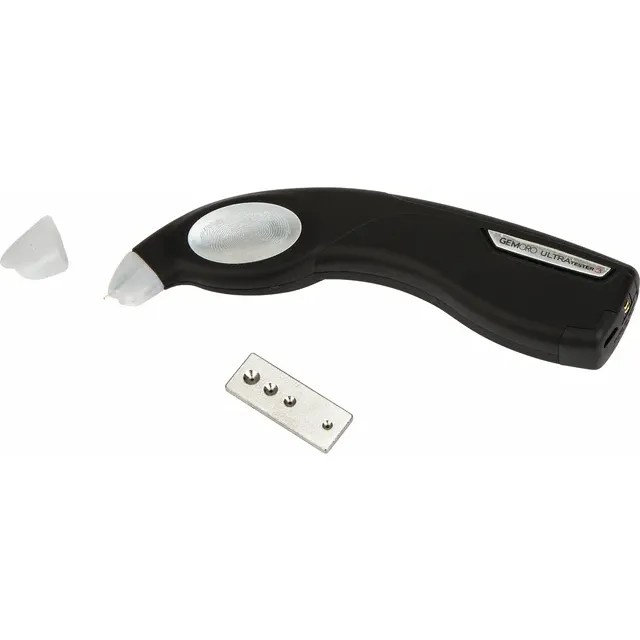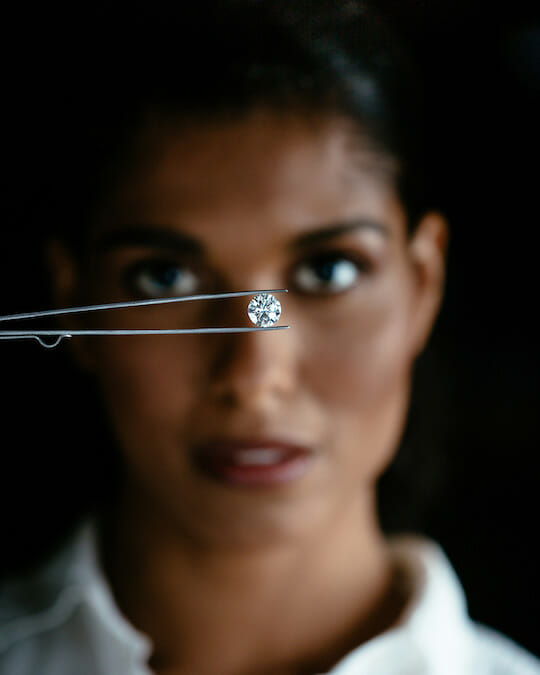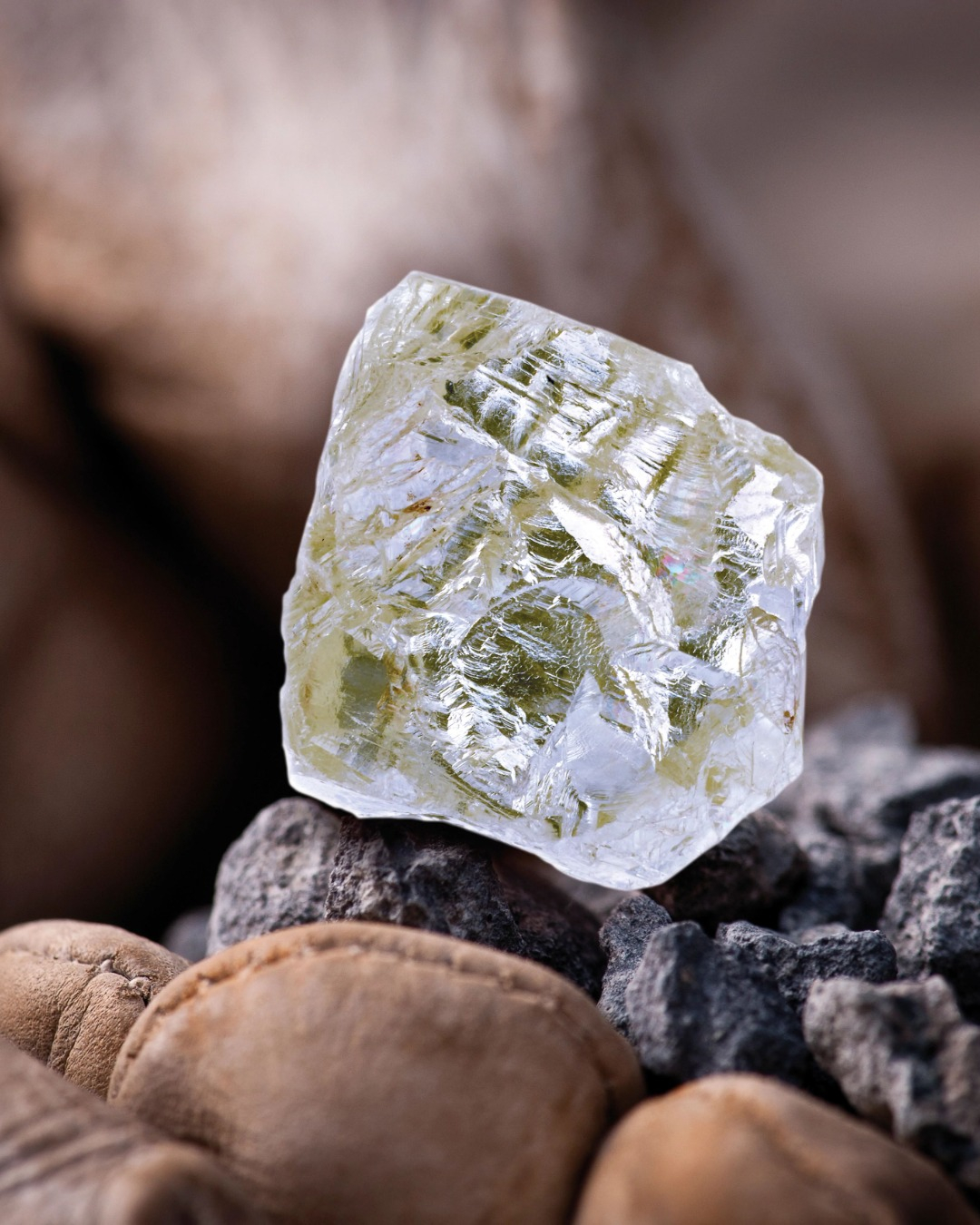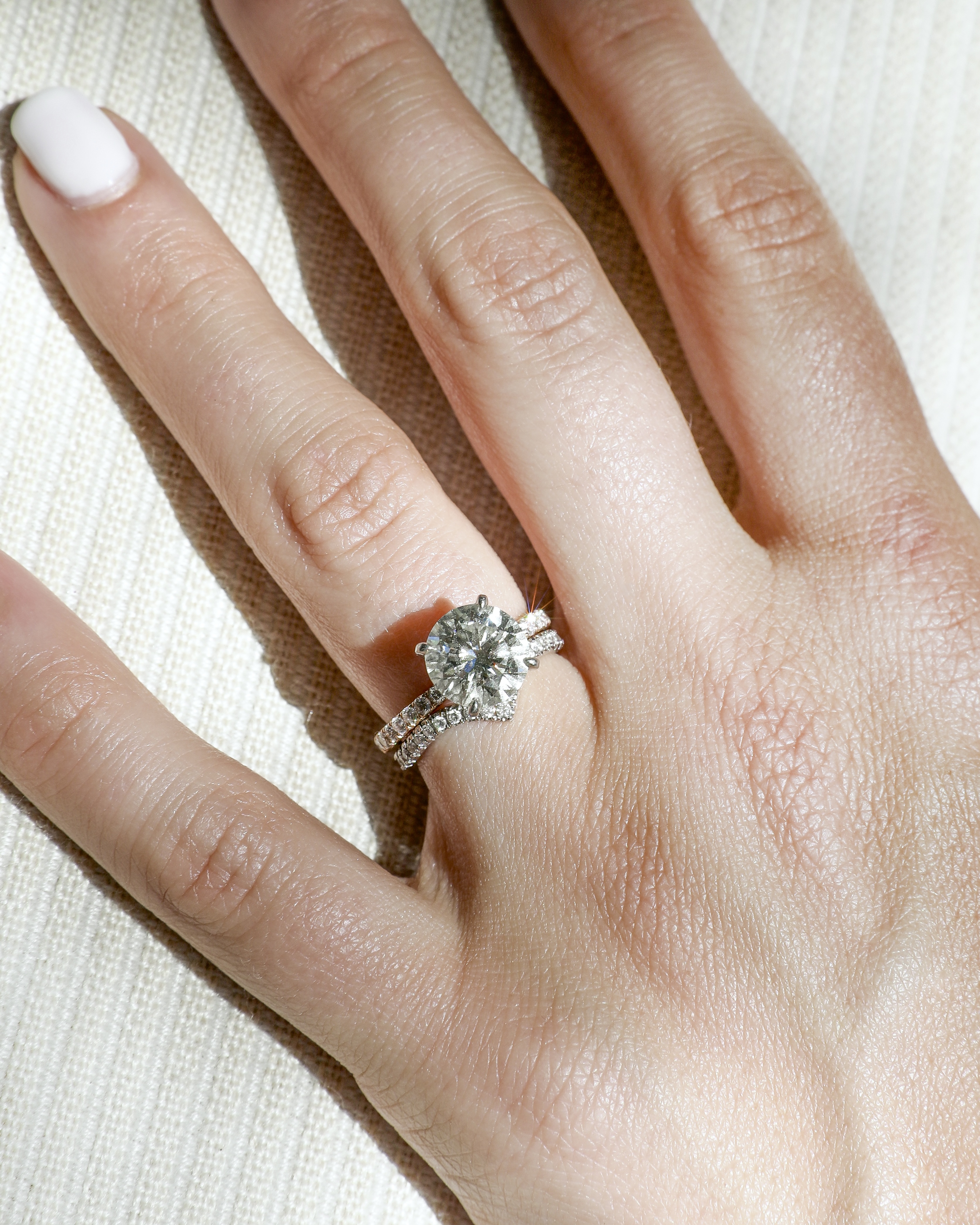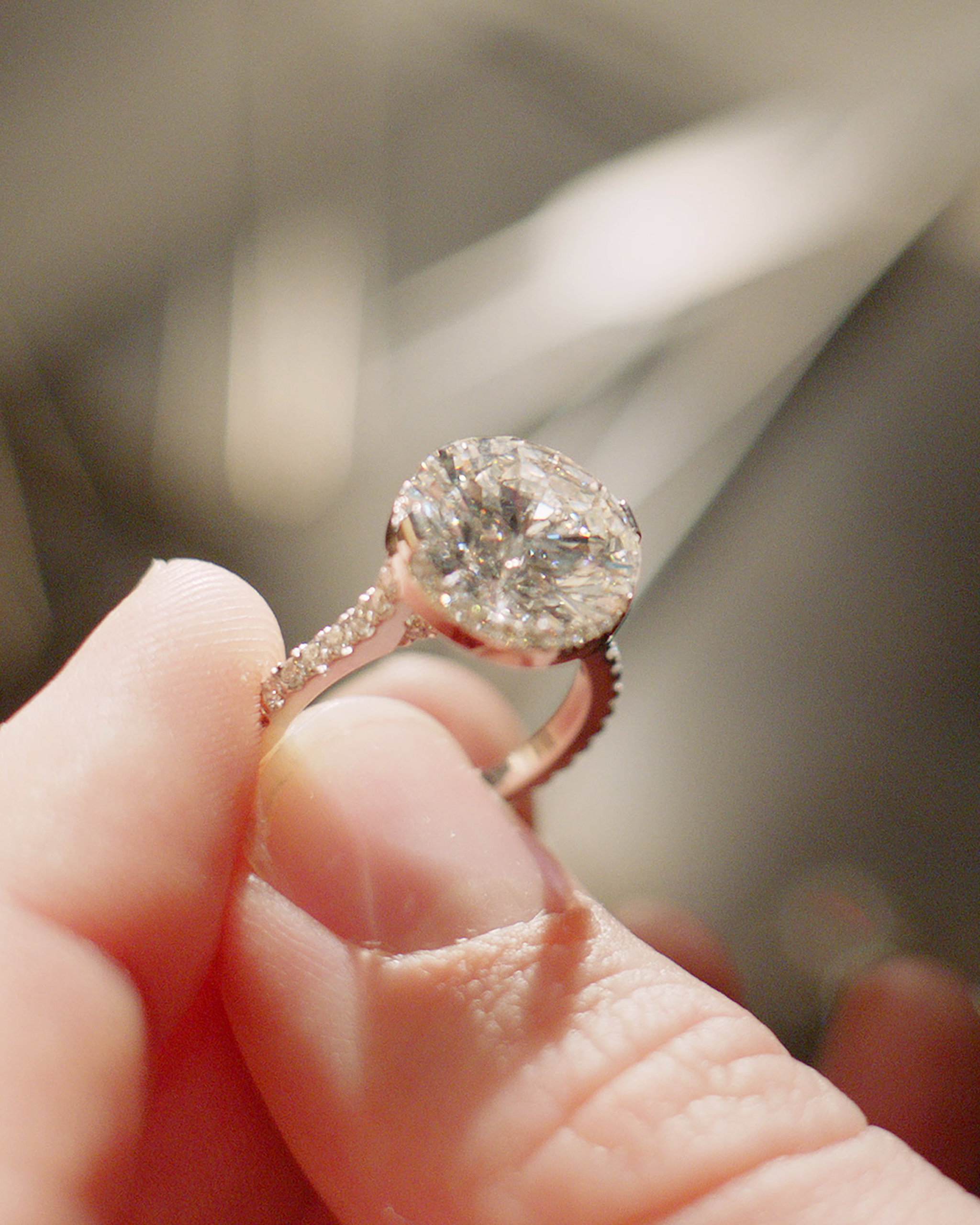May 23, 2025
By: Editorial Staff
How Do Diamond Testers Work?
Since diamonds conduct heat and electricity differently than most imitations (such as cubic zirconia or moissanite), the tester provides a quick and reliable way to verify authenticity. Diamond testers work by measuring the conductivity of the gemstone. Natural diamonds, being excellent heat conductors, will show a different response than laboratory grown diamonds (lab grown diamonds), which are typically less conductive. Some diamond testers are specifically designed to differentiate between natural and lab grown diamonds by analyzing how the stone reacts to heat or electrical conductivity. By using a reliable diamond tester, you can gain confidence in determining the true origin of your diamond.
Types of Diamond Testers
There are two primary types of diamond testers available: thermal conductivity testers and electrical conductivity testers.
Thermal Conductivity Testers: These testers work by measuring how quickly heat moves through the gemstone. Since diamonds are excellent thermal conductors, they dissipate heat faster than most diamond simulants, such as cubic zirconia. However, a thermal diamond tester is not reliable for distinguishing between natural and lab grown diamonds because both have similar thermal conductivity. Since lab grown diamonds (CVD and HPHT) have the same thermal properties as natural ones, they can easily pass as natural diamonds.
Electrical Conductivity Testers: Electrical conductivity testers measure how well a gemstone conducts electricity, helping to distinguish between different types of stones. For example, a diamond/Moissanite tester uses electrical conductivity to differentiate diamonds from Moissanite, making it a more precise option for gem identification. These testers can help differentiate between natural diamonds, lab grown diamonds, and Moissanite:
- Natural Diamonds: Conduct electricity very weakly.
- HPHT Lab Grown diamonds: May have higher electrical conductivity due to metallic inclusions from the manufacturing process.
- CVD Lab Grown Diamonds: Generally have low electrical conductivity, similar to natural diamonds.
- Moissanite: Exhibits high electrical conductivity, which is a key characteristic that helps distinguish it from diamonds.
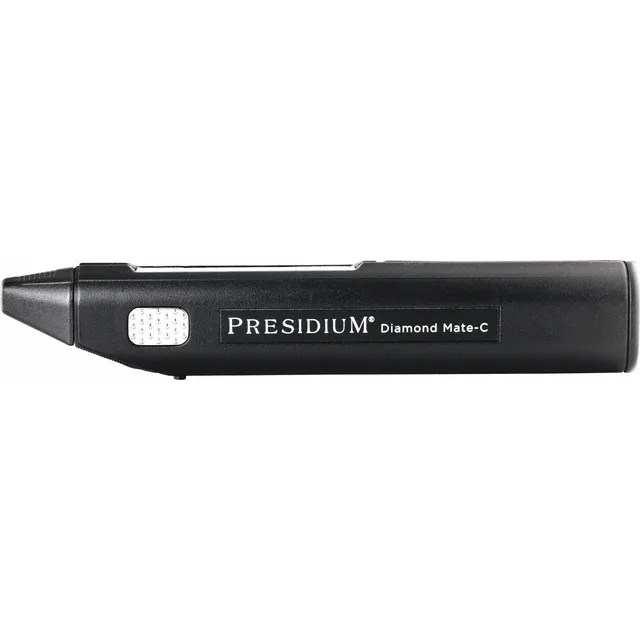
Are Diamond Testers Foolproof?
While diamond testers provide valuable information, they are not always foolproof. The most accurate way to verify whether your diamond is natural or lab grown is through professional certification from a reliable, independent gemological laboratory, such as the Gemological Institute of America (GIA). These certifications use advanced tools and techniques to determine the origin of the diamond. For the most accurate results, jewelers and gemologists use UV fluorescence, photoluminescence spectroscopy, and specialized lab equipment like a DiamondView or GIA iD100.
For at-home testing, a combined thermal and electrical tester (like the Presidium Multi Tester) can provide helpful results, but for absolute certainty, a professional gemological laboratory assessment is best. If you need a quick and convenient test—whether at home or with a jeweler—a diamond tester is a practical option. However, to definitively determine if a diamond is natural or lab grown, a professional evaluation is recommended.
How to Use a Diamond Tester Effectively
If you decide to use a diamond tester at home, follow these steps for accurate results:
Clean the Diamond: Ensure your diamond is free from dirt and oils, as contaminants can interfere with conductivity readings.
Turn On the Tester: Allow the device to warm up according to the manufacturer’s instructions.
Place the Probe on the Diamond: Gently place the tip of the tester onto the stone’s surface, ensuring it makes good contact.
Interpret the Results: The tester will indicate whether the stone is a diamond, moissanite, or a simulant like cubic zirconia.
Repeat if Necessary: For confirmation, test multiple areas of the stone and compare the readings.
Factors That Can Affect Diamond Tester Accuracy
Several factors can impact the accuracy of a diamond tester, including:
Battery Power: Low battery levels can lead to incorrect readings.
Stone Temperature: If a diamond is too hot or too cold, it may affect thermal conductivity readings.
Metal Interference: Always test the stone itself, avoiding metal prongs or settings.
Diamond Coatings: Some diamonds have coatings that can alter conductivity results.
Choosing the Right Diamond Tester
When selecting a diamond tester, consider the following:
Accuracy: Opt for a tester that can distinguish between diamonds and moissanite.
Ease of Use: A user-friendly design ensures better handling and reliability.
Portability: Compact and lightweight models are ideal for on-the-go testing.
Additional Features: Some testers come with built-in UV lights or magnifiers to enhance testing precision.
A diamond tester is an invaluable tool for determining the authenticity of a gemstone. While it provides quick and reliable results, it is best used in combination with other verification methods, such as professional gemological assessments. Understanding how a diamond tester works, its limitations, and how to use it properly can help you confidently determine whether your diamond is natural, lab grown, or a simulant. Whether you are a jeweler, collector, or buyer, investing in a high-quality diamond tester ensures peace of mind when evaluating precious stones. To see available professional diamond verification instrument options, visit the ASSURE Directory.
Protecting and Reassuring Consumers
- Retailers obtain specific grading reports or certifications from independent organizations that can verify the origins and quality of natural and synthetic diamonds.
- Legal terminology, definitions, and advertising guidelines exist to protect and reassure consumers about whether they are purchasing a natural or laboratory grown diamond. They also guide audiences on what can and cannot be classified as a diamond.
- In the US, the Federal Trade Commission put out Guides to address these topics. Key points from all the standards are:
- The word ‘diamond’ used on its own always implies a natural diamond.
- Terms like ‘natural, real, genuine and precious’ (which can be used for natural diamonds from the Earth), are forbidden in the marketing of laboratory grown diamonds.
- Just three terms can be used to describe synthetic diamonds: ‘synthetic diamonds’, ‘laboratory grown diamonds’ and ‘laboratory created diamonds’. In the US, the term ‘manufacturers name’-created diamonds is also accepted
- ‘Man-made’, ‘cultured’, and ‘above-ground’, ‘sustainably-made’ are not acceptable terms for laboratory grown diamonds.
About Natural Diamond Council
Natural Diamond Council (NDC) is the global authority on natural diamonds. As a not-for-profit organization, NDC is committed to advancing the integrity of the natural diamond industry and celebrating the unmatched beauty and value of natural diamond jewelry. NDC serves as the industry’s definitive voice, offering expert insight, trusted education, and unparalleled access to the world of real, rare, and responsibly sourced natural diamonds.

